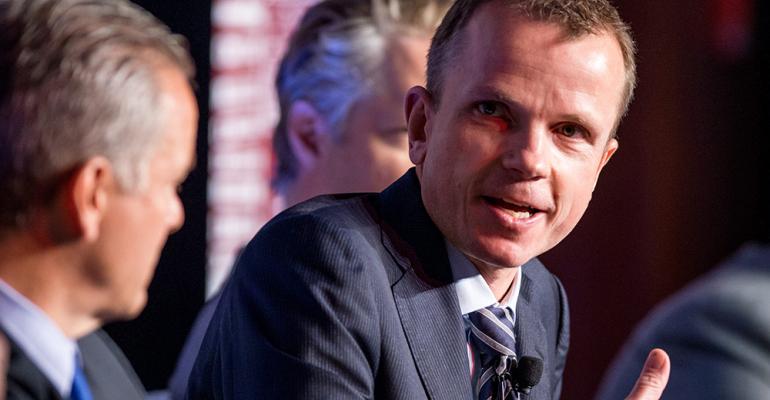NEW YORK – Luxury-vehicle makers today are facing the complex challenge of moving downmarket in the U.S. to meet the changing demands of a broader customer base and tightening regulations without diluting their brands.
“Luxury is democratizing,” says Michael Bartsch, vice president, Infiniti America.
Bartsch says just a few short years ago luxury makers targeted the baby-boomer generation, or today’s 50- and 60-something set of buyers, almost exclusively. Today, luxury brands are marketing to buyers as young as 20-something Millennials.
Leasing also has boomed, Bartsch tells the 2014 Automotive Forum here, an event linked to the New York auto show and sponsored by the National Automobile Dealers Assn. and J.D. Power. “Price is becoming less of an issue,” he says.
U.S. sales reflect luxury’s growth. According to WardsAuto data, premium-segment sales reached 1.98 million units last year for a 12.8% share of the light-vehicle market, compared with 1.22 million deliveries in 2009 for an 11.7% share.
More players are joining the segment, too. Longtime bargain brand Hyundai now offers three legitimate luxury cars in the U.S., and Hyundai Motor America President and CEO Dave Zuchowski says that number will grow to four models within five years.
It was a move the brand was forced to make, he says, as its buyers matured and grew wealthier. Roughly 45% of Hyundai’s luxury sales are to current customers.
“Those are customers we would have lost” without the two Genesis models and Equus, he says.
The activity makes for a crowded field of sellers, the executives admit.
“The oxygen is getting thin in the C- and D-segments,” says Scott Keogh, president, Audi America. “There is more potential downstream.”
New customers also are compelling luxury brands to venture into new territory, a move seen challenging the historical definition of luxury. For instance, rear-wheel drive and V-8 engines no longer are the price of entry in the segment.
“We’re not a sprinter,” offers Steve Cannon, president and CEO, Mercedes-Benz USA. “We are more of a decathlete, doing everything we can for the customer.”
Most luxury brands now offer 4-cyl. engines in their vehicles, as well as front-wheel drive and use alternative materials to steel such as aluminum.
“We’ve always been a modern, progressive luxury brand that takes an alternative viewpoint,” Keogh says, citing Audi’s migration to all-wheel drive and downsized, turbocharged powertrains. “This is what Audi has done throughout its history and I see that continuing.”
Electric-vehicle maker Tesla changed the game, too, the executives say, by unlinking green technology from more mainstream and arguably bland offerings such as the Toyota Prius or Chevy Volt.
“The success of Tesla says luxury still wins,” says Uwe Ellinghaus, chief marketing officer-Global Cadillac at GM. “This is just a new form of luxury.”
Electrification also will keep luxury brands healthy, as federal fuel economy and emissions regulations grow tighter in coming years. Ellinghaus points to the $90,000 Cadillac ELR extended-range electric vehicle.
“The ELR is not cheap,” he says. “It is very luxurious.”
Ellinghaus says the intention of the ELR is not to paint the Cadillac brand green, but rather emphasize its technology leadership and allow it to sell in states requiring zero-emission vehicles. Cadillac will add more electrification to other products in the future, he adds, driven by those regulations.
“We have to accept this job,” he says.





